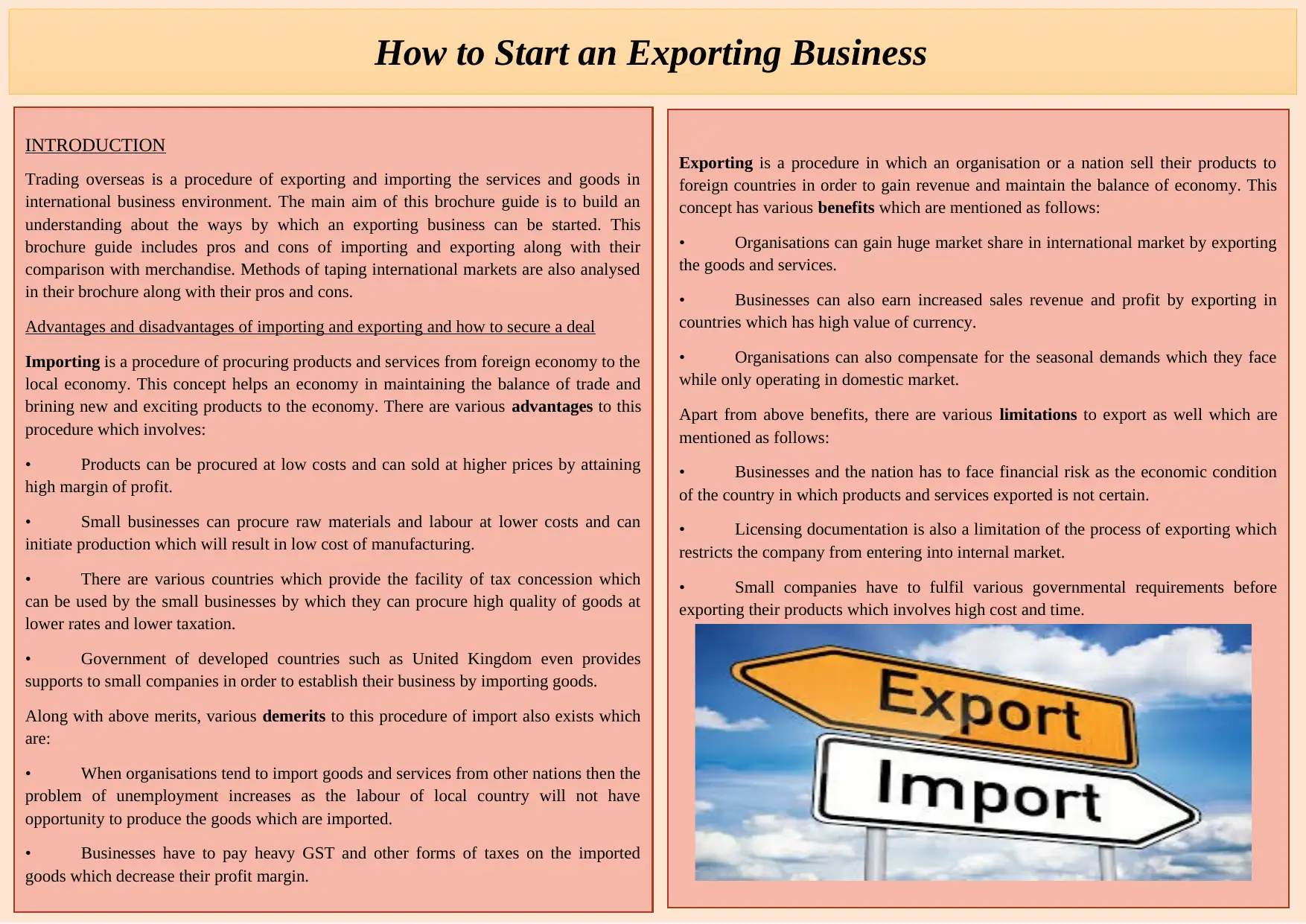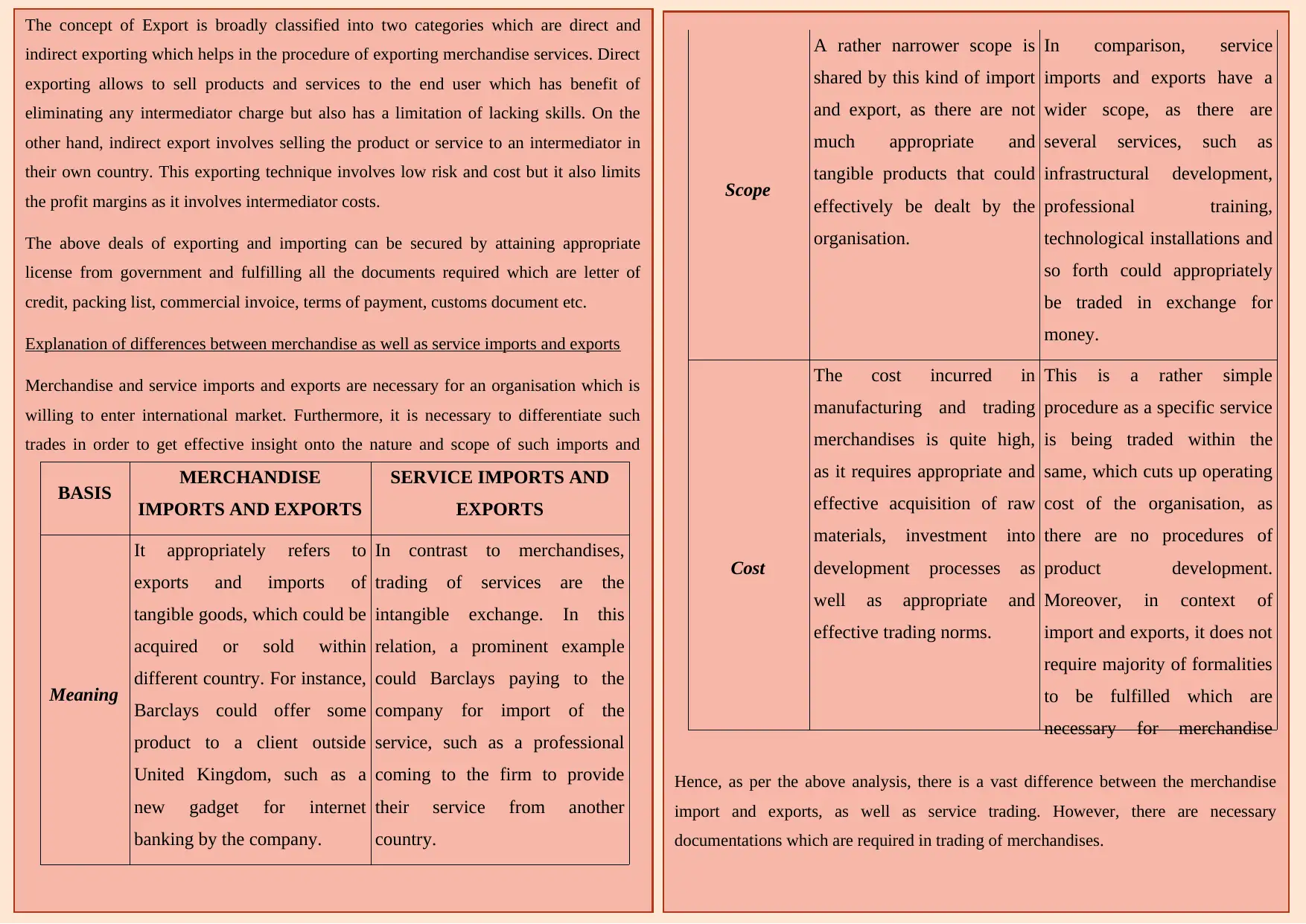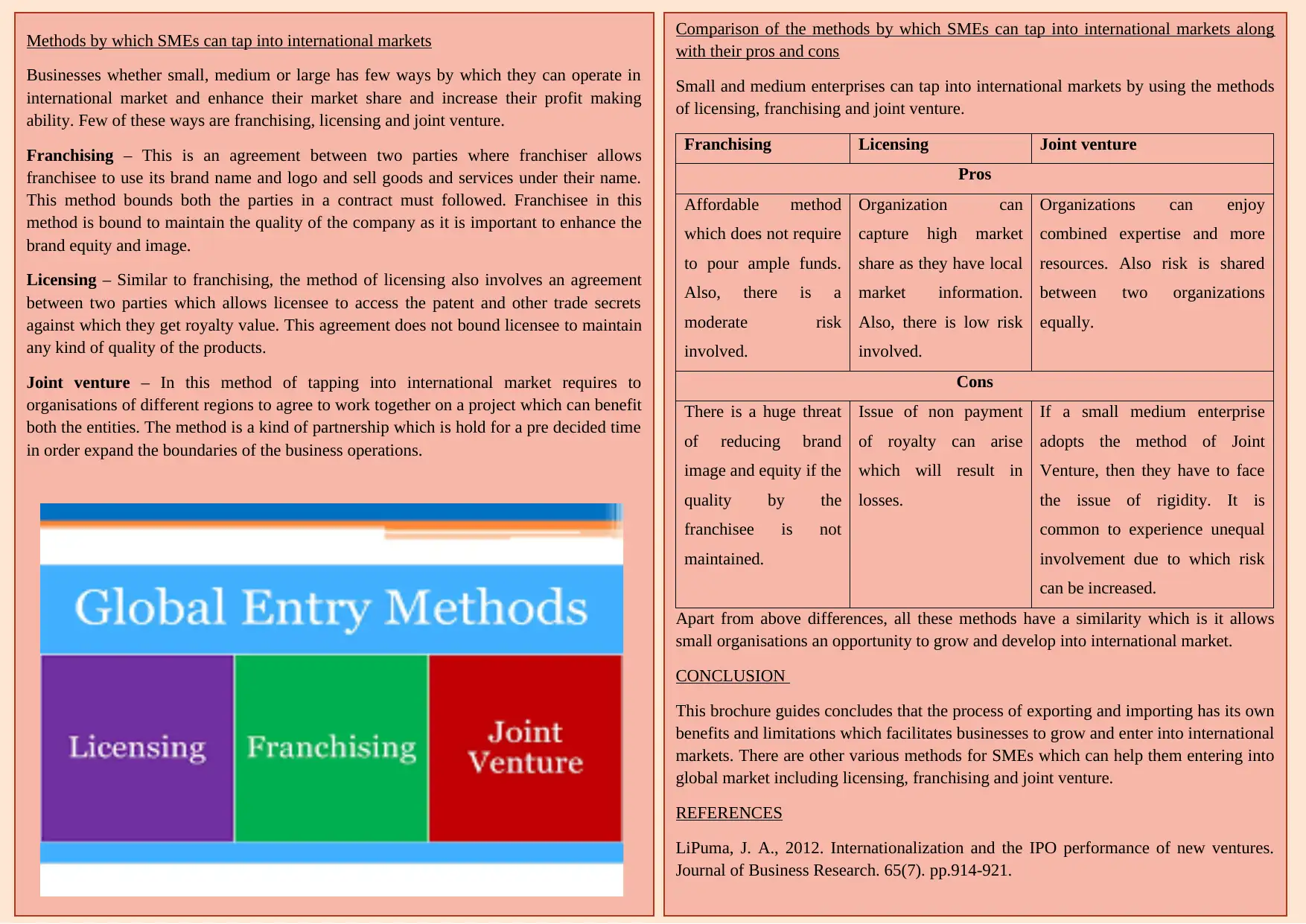A Comprehensive Guide to Starting and Operating an Exporting Business
VerifiedAdded on 2023/01/17
|3
|1555
|35
Report
AI Summary
This report provides a comprehensive guide to starting an exporting business, covering the fundamental aspects of international trade. It begins with an introduction to exporting and importing, outlining their benefits and drawbacks, and comparing merchandise and service trade. The guide then delves into methods for accessing international markets, including franchising, licensing, and joint ventures, along with their respective advantages and disadvantages. It explains how businesses, particularly SMEs, can leverage these methods to expand their operations globally. The report also explores how to secure deals in exporting and importing, detailing essential documentation and procedures. The analysis includes a comparison of merchandise and service imports and exports, highlighting their differences. The guide concludes by summarizing the key takeaways, emphasizing the importance of understanding the intricacies of exporting and importing for business growth. This resource, along with other academic materials, is available on Desklib to assist students in their studies.
1 out of 3









![[object Object]](/_next/static/media/star-bottom.7253800d.svg)